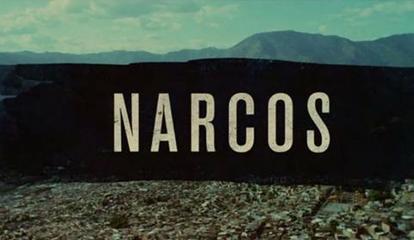
New Order starts with a chaotic montage of images. There’s a modern art painting, a naked lady covered in green paint, and plenty of lifeless bodies. Each image flashes up on screen for half a second as bold orchestral music plays in the background. It’s a disorientating and sensationalist start which gives us a sign of the chaos to come.
The film relaxes for 15 minutes after the opening as we enter the safety bubble of an upper class wedding in Mexico City. There’s a lot of mingling and small talk. It’s a world which feels a lot like the exclusive Mexico City world shown in The Good Girls. Everyone is focused on their business and completely oblivious to the lives of the public outside of their social sphere.
However, some ominous signs start to appear that connect to the chaotic opening montage which the film uses to build unease. The tap water starts running green; the judge for the wedding is late; and one guest appears with a green splodge on her shirt. Meanwhile the bride disappears to help out one of their former maids. The outside world is getting closer to their upper class bubble.
It’s not long before the bubble bursts and some outsiders splattered in green climb over the walls surrounding their property, symbolic of the wealth divide. At this point everything suddenly goes mad as the security guards turn on the wealthy family and start raiding the house for valuables alongside the home invaders. It’s not particularly clear who the invaders are, but from who they’re targeting it seems like it’s an anti-rich uprising. From this point on the film descends into nihilistic chaos that reminded me of Todd Phillips Joker. It’s not really clear what the nihilism is supposed to represent besides a vague: rich are bad, and the poor victimized and it’s never really clear why everything is happening. As a result, the second half comes across as a bit sensationalist and provocative and without too much depth to back up the action.
If you’d like to see some Mexican political movies with a bit more depth check out the satirical critique of Mexican politics in Luis Estrada’s The Perfect Dictatorship, and the horrifyingly real nihilism in Amat Escalante’s Heli. There’s also Children of Men and Sons of Denmark if you want to watch some more chaotic near future dystopian movies.
Head to our AFI Fest Hub for more reviews and short films from AFI Fest 2020.





You must be logged in to post a comment.